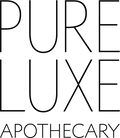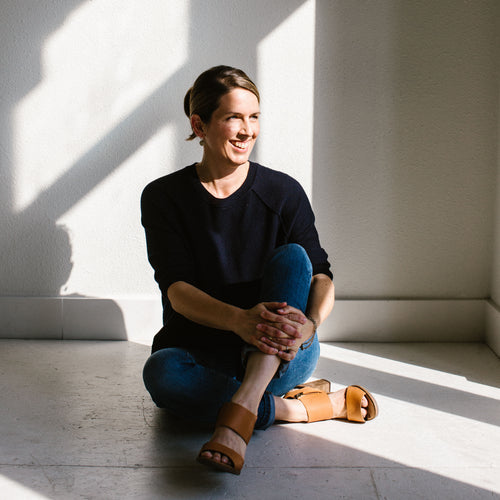What comes to mind when you hear the term castor oil?
Depending on individual experiences and cultural background, a person's answers could vary. Quite a bit, actually. Some may know it as a laxative for mild constipation. Some might know it as an ingredient in hundreds of different industrial products, like lubricants and coatings. Others might know it as part of traditional and holistic medicine practices for joints, inflammation, skin, and hair. Or, it might be totally unfamiliar!
Whatever the case, this ancient oil - and the plant it comes from - is fascinating. My particular interest in castor oil is centered around its beneficial properties for the skin. But the plant itself is pretty intriguing too ... Read on to learn more!
What is castor oil, exactly?
Castor oil is a botanical oil that comes from the castor bean plant (Ricinus communis), a large tropical plant native to northeastern Africa.

Castor bean plant 'Bright Red' variety / Source: outsidepride.com
To produce the oil used in skincare, the seeds of the castor bean plant are cold-pressed and filtered. The result is a clear-to-yellowish oil with a very viscous consistency - thick and somewhat sticky, but also slippery.
Because of its unique texture, it's a cool ingredient to work with when I'm formulating and making product batches. It blends beautifully with other oils and adds so many beneficial properties.
What areas of the world does it come from?
While the castor bean plant is native to northeastern Africa, over time it’s been naturalized and cultivated in many tropical and subtropical regions.
According to the Food & Agriculture Organization of the United Nations (FAOSTAT), India is by far the largest producer and exporter of castor oil. Other top producing countries are Mozambique, Brazil, and China. (For importers, China, France, Germany, and the US top the list.)

Top countries producing castor oil, 2022 / Source: FAOSTAT
How long has castor oil been used?
Throughout recorded history (at least 5,000 years) castor oil has been a valuable commodity and an integral part of beauty, medicine, and industry. In ancient Egypt, it was mentioned in various scripts at least as old as 1500 BCE and also used by Cleopatra in her lifetime (around 70-30 BCE).
Today, the market for this oil continues to grow, thanks in large part to its status as a renewable resource. And for its hundreds of uses worldwide.
What's the actual castor bean plant like?
Described as a ‘semi-woody, fast-growing shrub,' the castor bean plant thrives in full sun and grows around 6-10 feet in a growing season. Stems of different varieties can be green, red, or purple, and the large, glossy leaves typically have 5-11 points. There are several cultivars grown for ornamental gardening worldwide, though they only grow as annuals in colder climates like the Midwest.
After blooming, the plant produces brightly colored seed pods covered in spines. Once the pods mature and dry, the seeds inside emerge - mottled and smooth with really beautiful patterns.

Castor farming in India / Source: kaiima.com

Castor bean seed pods / Source: TheDollarBusiness

Castor bean seeds I bought at a local garden center
Before you add castor bean plant to your landscape though, it’s important to know the plant and seeds are actually highly toxic. The seeds and pods of the castor bean plant contain ricin (pronounced RYE-cin), which is a potent natural poison. However, even though castor oil is produced from the seeds, castor oil itself is not toxic and does not contain ricin. This is because ricin is water soluble - not oil soluble - so it remains in the bean pulp that’s left after the oil has been pressed out.
So while castor bean plant can add color and interest to a garden, it's not a great one for areas used by children and pets. Also consider whether your particular climate is mild enough for plants to self-seed and become problematic. In the right conditions, castor bean plants can become invasive and are considered noxious weeds in Australia, Florida, and parts of California.
What are the benefits of using castor oil in natural skincare?
The most prevalent natural compound in castor oil is ricinoleic acid, an omega-9 fatty acid that makes up almost 90% of its oil profile. Fatty acids in general (omega 3, 6, and 9) are critical to cell membranes and tissue function in the body; they have a significant impact on health and wellbeing, both internally and externally.
Among the many useful properties of castor oil, here's a quick glance at the ones I find most beneficial for the skin:
- Emollient/Moisturizing: Highly softening and soothing. Helps relieve dryness, scaling, and irritation.
- Anti-inflammatory: Helps reduce pain, redness and inflammation, making it a useful ingredient for skin sensitivities like rosacea and eczema.
- Cleansing: Lifts dead skin cells, excess oil, dirt, and bacteria without drying or harsh effects.
- Antimicrobial: Helps fight bacteria and other pathogens that can lead to acne breakouts or infections. Using castor oil regularly can help maintain clear and healthy skin.
And, like many other natural botanical ingredients, castor oil is:
- nontoxic
- biodegradable
- a renewable resource
Which Pure Luxe Apothecary formulas feature Castor Oil?
ENRICH DAILY FACE CLEANSER
I consider this product a daily essential in my skincare rituals (find it in the Daily Essentials Set too). Castor oil is a key ingredient thanks to its gentle and effective cleansing properties. It helps clean without drying, calm irritated skin, and heal breakouts. In combination with jojoba and olive oil, plus cedar wood, palmarosa, and ylang ylang, this formula is silky, fragrant, holistic, and so lovely to use.
Learn more: How to Oil Cleanse
Full Ingredient list: Olea europaea (olive) oil, Simmondsia chinensis (jojoba) oil, Ricinus communis (castor) oil, Cedrus deodara (cedarwood) essential oil, Cananga odorata (ylang ylang) essential oil, Cympbopogon martini (palmarosa) essential oil
SEA BERRY LIP OIL
Instead of 'coating' and sitting on top of the lips (like a balm does, for instance), Sea Berry Lip Oil sinks into the deeper layers of this delicate skin, moving below the surface to promote elasticity, hydration, and healing. Castor oil is a key ingredient in this formula for softening and helping to prevent dryness and cracking. I always use Sea Berry Lip Oil right after brushing my teeth, and it feels so good!
Learn more: Sea Berry Lip Oil Q & A
Full Ingredient List: Persea gratissima (avocado) oil, Organic Simmondsia chinensis (jojoba) oil, Organic Ricinus communis (castor) oil, Organic Hippophae rhamnoides (sea buckthorn berry) oil, Citrus sinensis (sweet orange) essential oil, Rosa damascena (rose) essential oil, Coriandrum sativum (coriander) essential oil.
I hope you learned some new and interesting details about the amazing natural ingredient that is castor oil. And I hope you're inspired to use it in your skincare and wellness rituals!
Further reading:
Ricin: An Ancient Story for a Timeless Plant Toxin
University of Wisconsin-Madison Horticulture: Castor Bean
How to Plant and Grow Castor Bean (BHG)
National Library of Medicine: Castor Oil Properties and Uses
Markwide Research Report: China Castor Oil Market Analysis 2024-2032
Castor Oil Production in India (kaiima.com)
*****
I believe in keeping things simple, yet sophisticated. Using beautifully effective, natural ingredients, I create luxurious skincare and wellness goods for everyday rituals. In every small batch of Pure Luxe Apothecary products, you'll find a fusion of pure, plant-based ingredients, thoughtfulness, and intention. These modern and minimalist remedies are rooted in holistic health to support your entire being - mind, body, and spirit.
Cheers to good health and happy skin!




